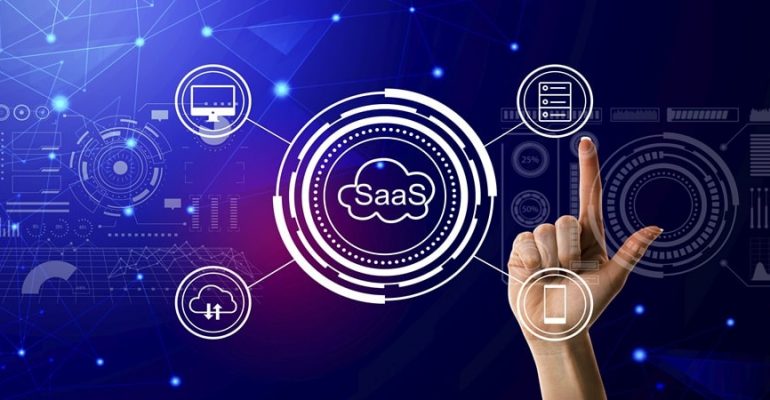
Emerging Trends in SaaS Cloud: What to Expect in 2024

Emerging Trends in SaaS Cloud: What to Expect in 2024
In today’s fast-paced digital world, Software as a Service (SaaS) has become a cornerstone of business operations. Companies of all sizes leverage SaaS cloud solutions to enhance productivity, improve collaboration, and reduce operational costs. As we move further into 2024, the SaaS landscape continues to evolve, driven by advancements in technology and changing business needs. In this blog, we’ll explore the latest trends shaping the future of SaaS cloud and what businesses can expect in the coming year.
AI and Machine Learning Integration
One of the most significant trends in the SaaS industry is the growing integration of artificial intelligence (AI) and machine learning (ML). These technologies are transforming how SaaS platforms operate, offering unprecedented levels of personalization and efficiency. For instance, AI-powered algorithms analyse user behaviour to deliver personalized experiences, boosting engagement and customer satisfaction. Predictive analytics, driven by machine learning, is enabling businesses to make data-driven decisions, optimize operations, and anticipate market trends.
Moreover, AI-driven automation is streamlining routine tasks, allowing employees to focus on more strategic initiatives. As AI and ML continue to mature, their impact on SaaS platforms will only deepen, making them indispensable tools for businesses looking to stay ahead of the competition.
Vertical SaaS Solutions
While traditional SaaS platforms have been designed to cater to a broad audience, there is a growing demand for industry-specific solutions. Vertical SaaS, which focuses on delivering tailored solutions for specific industries, is gaining traction. Whether it’s healthcare, finance, or retail, businesses are increasingly turning to vertical SaaS providers for specialized features and functionality that address their unique needs.
These solutions offer a higher degree of customization and flexibility compared to generalist SaaS platforms. As industries become more complex and regulated, the demand for vertical SaaS solutions is expected to rise, providing businesses with the tools they need to navigate their specific challenges.
API-First and Microservices Architecture
The API-first approach is becoming the standard in the SaaS world. By prioritizing APIs from the outset, SaaS providers are enabling seamless integration between different platforms and services. This approach supports the growing API economy, where businesses can create interconnected ecosystems that enhance operational efficiency.
Additionally, microservices architecture adoption is surging. This proceed disintegrates applications into smaller, independent services that can be developed, deployed, and scaled independently. Microservices offer greater flexibility, allowing SaaS providers to roll out new features faster and respond more quickly to market demands.
Focus on Data Security and Compliance
With the increasing volume of data being processed in the cloud, data security and compliance have become top priorities for SaaS providers. The adoption of zero trust security models, where every user and device must be authenticated before accessing the network, is on the rise. This approach minimizes the risk of data breaches and ensures that sensitive information is protected.
Moreover, as global data protection regulations become more stringent, SaaS companies are prioritizing compliance. Whether it’s GDPR, CCPA, or other local regulations, ensuring compliance is essential to avoid hefty fines and maintain customer trust. Additionally, data sovereignty has emerged as a critical consideration, with businesses opting for SaaS solutions that guarantee data is stored and processed within specific jurisdictions.
Rise of Low-Code and No-Code Platforms
The rise of low-code and no-code platforms is democratizing software development, enabling non-developers to create applications quickly and efficiently. These platforms provide drag-and-drop interfaces and pre-built templates, allowing users to build and deploy applications without extensive coding knowledge. This trend is accelerating innovation, as businesses can rapidly prototype and iterate on new ideas, reducing the time to market for new products and features.
Edge Computing and SaaS
Edge computing is another trend gaining momentum in the SaaS space. By processing data closer to the source, edge computing reduces latency and enhances the performance of SaaS applications. This is particularly important for applications that require real-time data processing, such as those used in IoT environments. As the adoption of IoT devices continues to grow, the integration of edge computing with SaaS platforms will become increasingly critical.
Multi-Cloud and Hybrid Cloud Strategies
To avoid vendor lock-in and ensure flexibility, more businesses are adopting multi-cloud and hybrid cloud strategies. Multi-cloud approaches involve using multiple cloud providers to distribute workloads, while hybrid cloud solutions combine on-premises infrastructure with cloud services. These strategies provide businesses with greater control over their IT environments, allowing them to optimize costs and improve resilience.
Sustainability and Green SaaS
Sustainability is becoming a key differentiator in the SaaS industry. As businesses become more environmentally conscious, they are seeking out SaaS providers that prioritize green practices. This includes using energy-efficient data centres, reducing carbon footprints, and adopting sustainable business practices. As a result, sustainability is becoming a competitive advantage for SaaS providers, influencing customer decisions and driving industry change.
Enhanced User Experience (UX) and Customer Support
As the SaaS market becomes more competitive, providers are investing in enhanced user experiences (UX) to differentiate their offerings. Intuitive interfaces, personalized dashboards, and streamlined workflows are becoming standard features, ensuring that users can quickly get up to speed with new tools. Additionally, with businesses operating globally, 24/7 customer support and self-service options are becoming essential, providing users with the help they need whenever they need it.
Conclusion
The SaaS cloud landscape is rapidly evolving, driven by advancements in AI, industry-specific solutions, and the growing importance of security and compliance. As businesses navigate these changes, staying informed about the latest trends will be crucial to maintaining a competitive edge. By embracing these trends, companies can harness the full potential of SaaS cloud solutions and position themselves for success in the digital age.